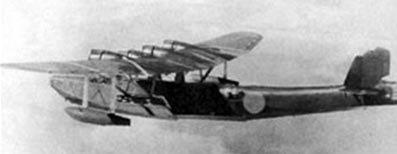Whereas in World War II, the westerners were producing a number of aircraft of several kinds, one of the important ones being flying boats, the Japanese came up with their own contributions to the art of aircraft design in the form of the Kawanishi “H6K Mavis” flying boats. “Mavis”, as codenamed by the Allies, resembled being a part of a German-produced Dornier series flying boat. In 1933, the Imperial Japanese Navy (IJN) started the process to make an experimental large flying boat. 2 designs were submitted by Kawanishi for monoplane flying boats. They included the “Type R” with three and the “Type Q” with four engines.
The initial prototype had capability to carry 9 crew members. It had a sleek design with streamlined hull, a strut-mounted wing with four Nakajima Hikari 2 nine-cylinder air-cooled radial engines with 625 kW (840 HP) each. The fuselage was long and slender with a tail that had a twin-fin tail design. The later prototypes were fitted with Mitsubishi Kinsei 43 radials with 745 kW (1,000 HP) engines. They were deployed to IJN in January 1938.
It is sometimes surprising to learn but H6K in fact was really the only possible exploration flying boat in service with any long-range capabilities with the Japanese Empire at the time when Pearl Harbor was attacked. In spite of the efforts made by the design team, this Japanese aircraft carried almost the same drawbacks which existed in the earlier Japanese airplanes. They all lacked self sealing fuel tank and their armament was poor. Moreover the armor protection was not up to the mark. They tried later with H6K5 to remove the limitations. When Japanese operation finally ceased in 1945, the H6K was replaced in production by the more capable Kawanishi brand H8K series of flying boat.
Specifications
| Crew: | nine |
| Length: | 25.63 m (84 ft 3 in) |
| Wingspan: | 40.00 m (131 ft 2 in) |
| Height: | 6.27 m (20 ft 6 in) |
| Wing area: | 170 m² (1,830 ft²) |
| Empty weight: | 11,707 kg (25,755 lb) |
| Loaded weight: | 17,000 kg (37,400 lb) |
| Max takeoff weight: | 21,500 kg (47,300 lb) |
| Engine: | 4x Mitsubishi Kinsei 43 or 46 14-cylinder, air-cooled, radial engines, 746 kW (1,000 hp) each |
| Maximum speed: | 331 km/h (211 mph) |
| Cruise speed: | 138 mph |
| Range: | 6,580 km (4,112 mi) |
| Service ceiling: | 9,610 m (31,520 ft) |
| Rate of climb: | 370 m/min (1,213 ft/min) |
| Wing loading: | 100 kg/m² (20 lb/ft²) |
| Power/mass: | 0.17 kW/kg (0.11 hp/lb) |
| Armament | 1 x 7.7 mm (0.3 in) Type 97 machine gun in nose 1 x Type 97 machine gun in spine 2 x Type 97 machine guns in waist blisters 1 x 20 mm Type 99 cannon in tail turret 2 x 800 kg (1,764 lb) torpedoes or 1,000 kg (2,205 lb) of bombs |
